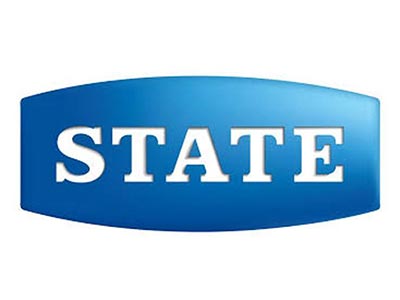By 2050 it is estimated that 2 in 5 workers will be retired comparing this to the 1 in 5 workers that are currently retired in 2015 and we can see why there is an increasing interest in long term care insurance.
There are primarily three places that we could end up in your old age and this ranges from an independent-living retirement village to a hospital bed where 24 hour a day treatment is needed. Rest homes are also a possibility while some of us will be lucky enough to have in-home care and treatment but, who is going to pay for this long-term care that we’re likely to need one day? Will our pension funds be sufficient or will we have to rely on government subsidies or on our family members? The truth is most people do not have nearly enough funds in their retirement or pensions accounts to be able to afford long-term care. If you're lucky enough to be able-bodied in your old age than a retirement village is a viable option however, there is no way to determine what will happen as we age and having a back-up plan that doesn’t include drying up your retirement account 10 years before your time. There is currently no long-term care insurance providers that cater to elderly people however, there are certain life insurance policy benefits and health care insurance policies that can certainly assist in such cases. In addition all New Zealanders are entitled to New Zealand Superannuation; which is a pension paid out to all people over the age of 65 and you may also qualify for accommodation and disability benefits too.
Under the Social Security Act of 1964 people that require long-term residential care must be assisted by the district health boards if they qualify for a government subsidy. In order to apply for the subsidy you would have to apply to be assessed to determine whether you qualify based on need. You would then need to qualify based on finical need which is determined through a financial means assessment that will combine both an asset and income test. If you're you want to qualify for government subsidy that will cover the costs of the services of a rest home you will either have to make a weekly contribution or have a government subsidy pay for the care by passing their qualification tests. To qualify for entry into a rest home you would have to be incapable of looking after yourself and home care cannot be an option which means that many people will not be able to qualify even though they require help to do the most basic things like bathing and feeding themselves. For someone to qualify for a residential care subsidy you have to be over sixty-five years of age, be determined to be unfit to care for oneself and have assets valued at or below $210,000 however if you have any income you will have to partially contribute to your care. If you own your home but do not have enough income to cover the cost of residential care you will be able to apply for a loan which will be repaid through the sale of your home after your death. Even though you won’t be entirely on your own there are some things that you should be doing from early on to ensure that you do not have to rely on the above in your old age and it all starts with drawing up a sound retirement plan.
The ignorance that most people harbor when it comes to retirement savings is amplified by the fact that they truly believe that they will be able to work well into their seventies to make up for their lack of savings. I know that an extended working life is mostly valid only for those who are already high earners because that it’s those very same high earners who will benefit from all the medical advancements made over the past twenty years and therefore be healthy enough to be able to continue working. Getting old means that your health and, probably that of your significant other will decline, medical bills will pile up and your ability to work will be hampered but, health is not the only factor that reduces our ability to continue working. Older job seekers will inevitably struggle to find work, with employers looking for younger people that will be able to work for many more years to come without the problems usually associated with older, less flexible employees. They may have more experience but companies simply don’t want to take the risk of employing someone who won’t be able work for more than five years. This is usually the reason that older employees that are lucky enough to find work will have their previous wages cut by at least a quarter.
Even those who do come to terms with the fact that their current savings and indeed their future savings, or lack thereof are simply insufficient most do nothing to improve their current savings. Why is this? There are many reasons that people put off retirement savings and this varies from struggling to pay off cars, homes and other loans to having more than one child in college or university. It’s already hard enough without having to take a chunk out of your current income to make up for the lack of savings. That’s why retirement savings should be looked at as a necessary monthly expense – not something that can happen every other month – it needs to happen early on and needs to be consistent.
So how much is enough? Obviously the amount of financial wealth that we need to have to ensure a comfortable retirement varies wildly based on location, standards of living and whether or not you have supplemental sources of income. Having a paid-off home means you will need less but the general rule of thumb is that we need to save twenty-times our net annual income to have a comfortable retirement. Retirement is not a popular topic amongst most age groups but the simple fact of the matter is that it definitely should be high on our priority list from the moment we begin earning regular pay checks – usually in our mid-twenties.
A person who begins saving for retirement at twenty-five will have more than twice the savings of someone who begins saving the same amount at age thirty-five however, most of the youngsters I know have a list of expenses and priorities that leave absolutely no space for early retirement savings. Another gloomy reality is that most people have absolutely no intention of opening a retirement savings account any time in the near future because they either believe it’s too late anyway and they’ll just have to make do with the income from social security and probably down-size or sell their homes or, they live under the impression that they’ll be able to work well past the average retirement age.
So let’s assume you’ve planned out and saved just the right amount– in order to ensure these funds last well into your retirement you have to stick to certain rules. Firstly, no more than 4% should be withdrawn in any single year. Secondly, if unforeseen expenses are incurred this percentage needs to drop to ensure that the amount is ironed out and thirdly you cannot make any withdrawals prior to your planned retirement date – not very realistic for most but unfortunately no amount of planning will ever ensure your financial security 100% but, we need to do our best don’t we?
In order to save adequately you need to make certain assumptions and base your goals on these assumptions. This means that you need to have an idea of at what age you’ll be retiring, what your monthly expenses will amount to and basically how long you’re going to live. Retirement calculations have received an incredible amount of criticism for being too rigid and crude – basically forgetting the very nature of humanity – the fact that lifespan is for the most part as unpredictable as health and unforeseen expenses are simply a reality most of us have to deal with but the fact remains that without a plan we simply have no goal to work towards. Your property and savings are likely to be your greatest assets in retirement and that’s why focusing on paying off your mortgage and setting up a savings account to supplement your pension should be your primary goal.









